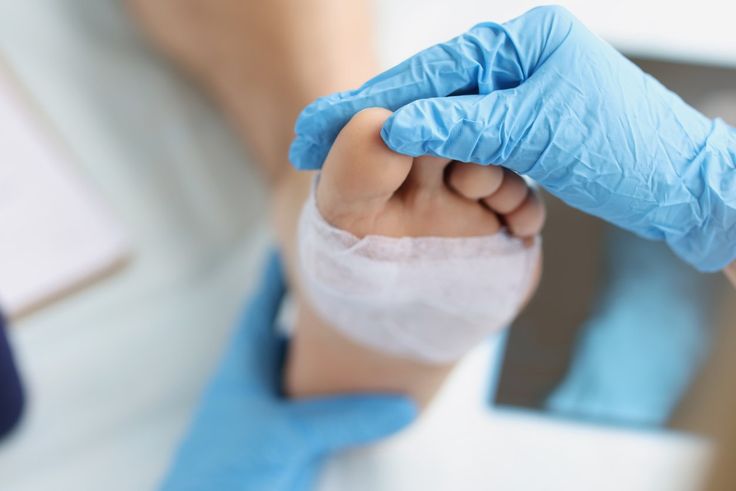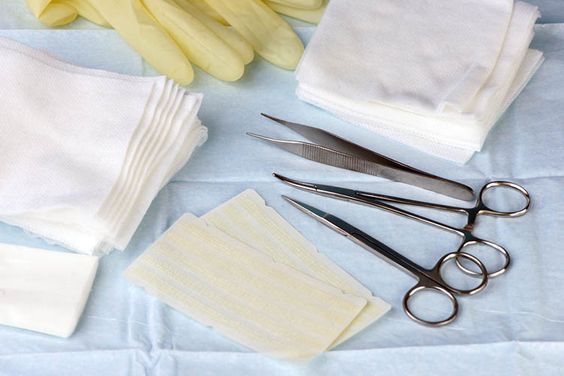When diabetic foot ulcers fall into a vicious cycle of "healing-rupture", patients will easily fall into the misunderstanding that it is safer to change the dressing every day. This cognitive bias may aggravate the imbalance of the wound microenvironment. As a functional wound care material, the core advantage of alginate dressings is that they can absorb 20 times their own weight of exudate and form a gel layer when in contact with the wound to maintain a moist healing environment. However, clinical data show that more than 60% of patients have their healing process hindered due to improper dressing frequency. Excessive intervention will destroy the new granulation tissue, while too long an interval may cause infection due to the accumulation of exudate.

How to determine when to replace alginate dressings?
This requires the establishment of a dynamic assessment system. In the initial debridement stage, the amount of wound exudate is large and turbid. It is recommended to change the dressing daily and cooperate with sharp debridement. At this time, the yellow-brown exudate absorbed by the dressing is actually the dissolution product of necrotic tissue, which is a normal phenomenon. After entering the granulation growth period, the exudate turns into a light pink serum-like substance, and the replacement can be extended to 2-3 days, but it is necessary to observe whether white impregnation appears on the edge of the dressing is a warning sign of long-term skin contact with exudate. For deep cavity wounds, it is recommended to use a two-layer dressing method of filling + covering. The outer layer of alginate absorbs the exudate, and the inner layer of alginate fiber promotes autolytic debridement. At this time, the replacement frequency needs to be dynamically adjusted according to the spread rate of the exudate.
How to avoid operational errors in-home care?
The key is to abandon the habitual thinking of changing the dressing when bleeding occurs. When a small amount of punctate bleeding is found after removing the dressing, this is a sign of active new capillaries, and there is no need to change it urgently. The correct process should be: first, wipe the edge of the wound from the inside to the outside with a saline cotton ball, and then apply the dressing after it dries naturally to avoid residual moisture affecting the gelation reaction of alginate. For load-bearing parts such as the heel, it is recommended to use the horseshoe dressing method, leaving the central area vacant to reduce friction and avoid the joint flexion surface when fixing the surrounding area with tape to prevent the dressing from shifting due to movement.
What special situations require emergency handling?
When the alginate dressing adheres to the wound bed and is difficult to peel off, do not tear it off forcibly. You can cover it with moist gauze for 5 minutes to soften the gel layer. If you smell a foul odor or find green, purulent secretions accumulating under the dressing, this indicates that there may be a Pseudomonas aeruginosa infection. You need to contact medical care immediately for secretion culture. It is worth noting that alginate is not a universal dressing. For dry black scab wounds, hydrogel must be used to soften the scab first. Rash use may aggravate ischemia.
The value of alginate dressings lies not only in exudate management, but also in the fact that the calcium ions they release can activate prothrombin and promote microvascular contraction. However, even the most advanced dressings must be based on the correct care process - assessing the wound stage, selecting suitable products, and grasping the rhythm of intervention. These three steps are indispensable. When nursing behavior shifts from "experience-driven" to "evidence-driven", the cure rate of diabetic foot ulcers may be substantially improved. For more information on Innomed®Alginate Dressing, Refer to the Previous Articles. If you have customized needs, you are welcome to contact us; You Wholeheartedly. At longterm medical, we transform this data by Innovating and Developing Products that Make Life easier for those who need loving care.
Editor: kiki Jia
When diabetic foot ulcers fall into a vicious cycle of "healing-rupture", patients will easily fall into the misunderstanding that it is safer to change the dressing every day. This cognitive bias may aggravate the imbalance of the wound microenvironment. As a functional wound care material, the core advantage of alginate dressings is that they can absorb 20 times their own weight of exudate and form a gel layer when in contact with the wound to maintain a moist healing environment. However, clinical data show that more than 60% of patients have their healing process hindered due to improper dressing frequency. Excessive intervention will destroy the new granulation tissue, while too long an interval may cause infection due to the accumulation of exudate.
How to determine when to replace alginate dressings?
This requires the establishment of a dynamic assessment system. In the initial debridement stage, the amount of wound exudate is large and turbid. It is recommended to change the dressing daily and cooperate with sharp debridement. At this time, the yellow-brown exudate absorbed by the dressing is actually the dissolution product of necrotic tissue, which is a normal phenomenon. After entering the granulation growth period, the exudate turns into a light pink serum-like substance, and the replacement can be extended to 2-3 days, but it is necessary to observe whether white impregnation appears on the edge of the dressing is a warning sign of long-term skin contact with exudate. For deep cavity wounds, it is recommended to use a two-layer dressing method of filling + covering. The outer layer of alginate absorbs the exudate, and the inner layer of alginate fiber promotes autolytic debridement. At this time, the replacement frequency needs to be dynamically adjusted according to the spread rate of the exudate.
How to avoid operational errors in-home care?
The key is to abandon the habitual thinking of changing the dressing when bleeding occurs. When a small amount of punctate bleeding is found after removing the dressing, this is a sign of active new capillaries, and there is no need to change it urgently. The correct process should be: first, wipe the edge of the wound from the inside to the outside with a saline cotton ball, and then apply the dressing after it dries naturally to avoid residual moisture affecting the gelation reaction of alginate. For load-bearing parts such as the heel, it is recommended to use the horseshoe dressing method, leaving the central area vacant to reduce friction and avoid the joint flexion surface when fixing the surrounding area with tape to prevent the dressing from shifting due to movement.

What special situations require emergency handling?
When the alginate dressing adheres to the wound bed and is difficult to peel off, do not tear it off forcibly. You can cover it with moist gauze for 5 minutes to soften the gel layer. If you smell a foul odor or find green, purulent secretions accumulating under the dressing, this indicates that there may be a Pseudomonas aeruginosa infection. You need to contact medical care immediately for a serious condition. It is worth noting that alginate is not a universal dressing. For dry black scab wounds, hydrogel must be used to soften the scab first. Rash use may aggravate ischemia.
The value of alginate dressings lies not only in exudate management, but also in the fact that the calcium ions they release can activate prothrombin and promote microvascular contraction. However, even the most advanced dressings must be based on the correct care process - assessing the wound stage, selecting suitable products, and grasping the rhythm of intervention. These three steps are indispensable. When nursing behavior shifts from "experience-driven" to "evidence-driven", the cure rate of diabetic foot ulcers may be substantially improved. For more information on Innomed®Alginate Dressing, Refer to the Previous Articles. If you have customized needs, you are welcome to contact us; You wholeheartedly. At longterm medical, we transform this data by Innovating and Developing Products that Make Life easier for those who need loving care.
Editor: kiki Jia

 English
English عربى
عربى Español
Español русский
русский 中文简体
中文简体








